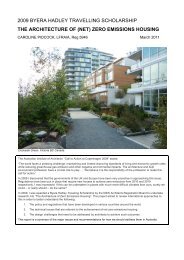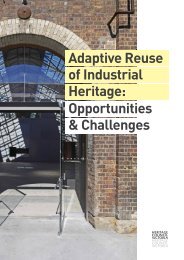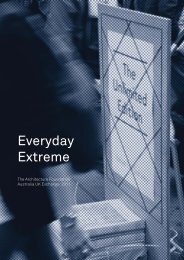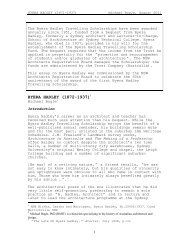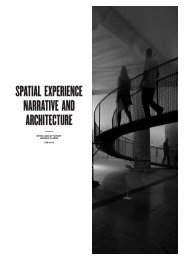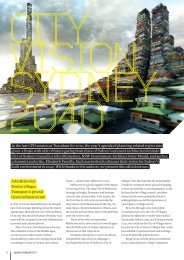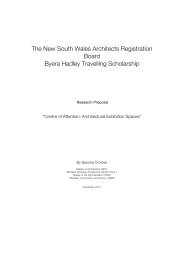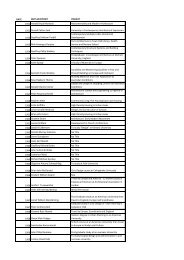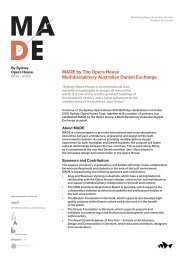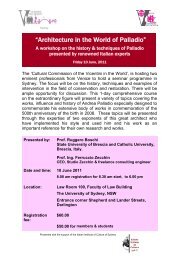4 unités LC - Architecture Insights
4 unités LC - Architecture Insights
4 unités LC - Architecture Insights
You also want an ePaper? Increase the reach of your titles
YUMPU automatically turns print PDFs into web optimized ePapers that Google loves.
Le Corbusier attributed certain features of ‘Immeubles-Villas’ to the<br />
Chartreuse d’Ema in Tuscany, which he had first visited back in<br />
1907 as a student. 27 The monastic lifestyle of the charterhouse had<br />
held a lasting effect on him, introducing him to the virtues of<br />
collective living.<br />
But it was not just the concept of a ‘collective life’ that had<br />
inspired Le Corbusier during this visit, it was also the organisation<br />
and separation of two very different aspects of daily life – one side<br />
private, reflective and self contained, and the other side communal<br />
and social. In the Chartreuse d’Ema, the collective spaces were<br />
organised and separated from the private living spaces of the<br />
monks. The individual rooms were secluded and totally isolated<br />
from each other, each being equipped with their own garden space<br />
and a view out to hills 28 – the idea that was adapted to the<br />
‘Immeubles-Villas’ (and utilised later, in the ‘Unités d’habitation’):<br />
“The ‘Immeubles-Villas’ proposes a formula for a brand new<br />
lifestyle in the big city. Each apartment is, in actual fact, a small<br />
house with a garden, situated at any height above the road level.<br />
But the road itself is modified; it is set away from the houses, trees<br />
overrun the city…” 29<br />
But it was not just the collective monastic lifestyle that had<br />
inspired Le Corbusier’s design of mass-houisng blocks. For also<br />
during the 1920’s, when the ‘Immeuble-Villas’ came about, the idea<br />
of the ‘communal-house’ was being widely explored throughout<br />
Russia and Germany, where working-class housing was considered<br />
very much a public matter 30 (a situation that would only arise in<br />
France after the war). The combining of private and collective lives<br />
was simply a pragmatic approach for the architects of the Russian<br />
Avant-Garde movement, tackling the problem of housing shortage<br />
experienced in Russia following the revolution. These socialist<br />
Soviet solutions evidently impressed Le Corbusier, who later<br />
employed some of their ideas to his own designs. 31<br />
35 36<br />
A housing shortage was equally being experienced in the industrial<br />
cities of Germany, where architects of the Bauhaus such as Walter<br />
Gropius and Bruno Taut were promoting the ideas similar to the<br />
soviet ‘social condensers’. The housing blocks they proposed<br />
promoted a minimisation of services and thus of energy<br />
consumption through localised collective use. Economy and<br />
expediency in the construction of the buildings was equally<br />
considered, with the integration of industry and factory produced<br />
elements in buildings. 32<br />
These industrised methods of construction were similarly<br />
suggested by Le Corbusier for the ‘Immeubles-Villas’, where it was<br />
proposed that the standardised building elements be prefabricated<br />
in a factory then transported to and assembled on site. 33 Such<br />
techniques were experimented in some of Le Corbusier’s<br />
constructed housing projects, thanks to private developers with<br />
faith in his ideas. These projects were the ‘Quartier Moderne<br />
Frugès’ (1925-28) 34 , ‘Pavillon Suisse’ (1930-32) 35 and ‘Immeuble<br />
Clarté’ (1930-32) 36 – each of which display certain elements that<br />
were later brought together in one design of the ‘Unité<br />
d’habitation’. 37





